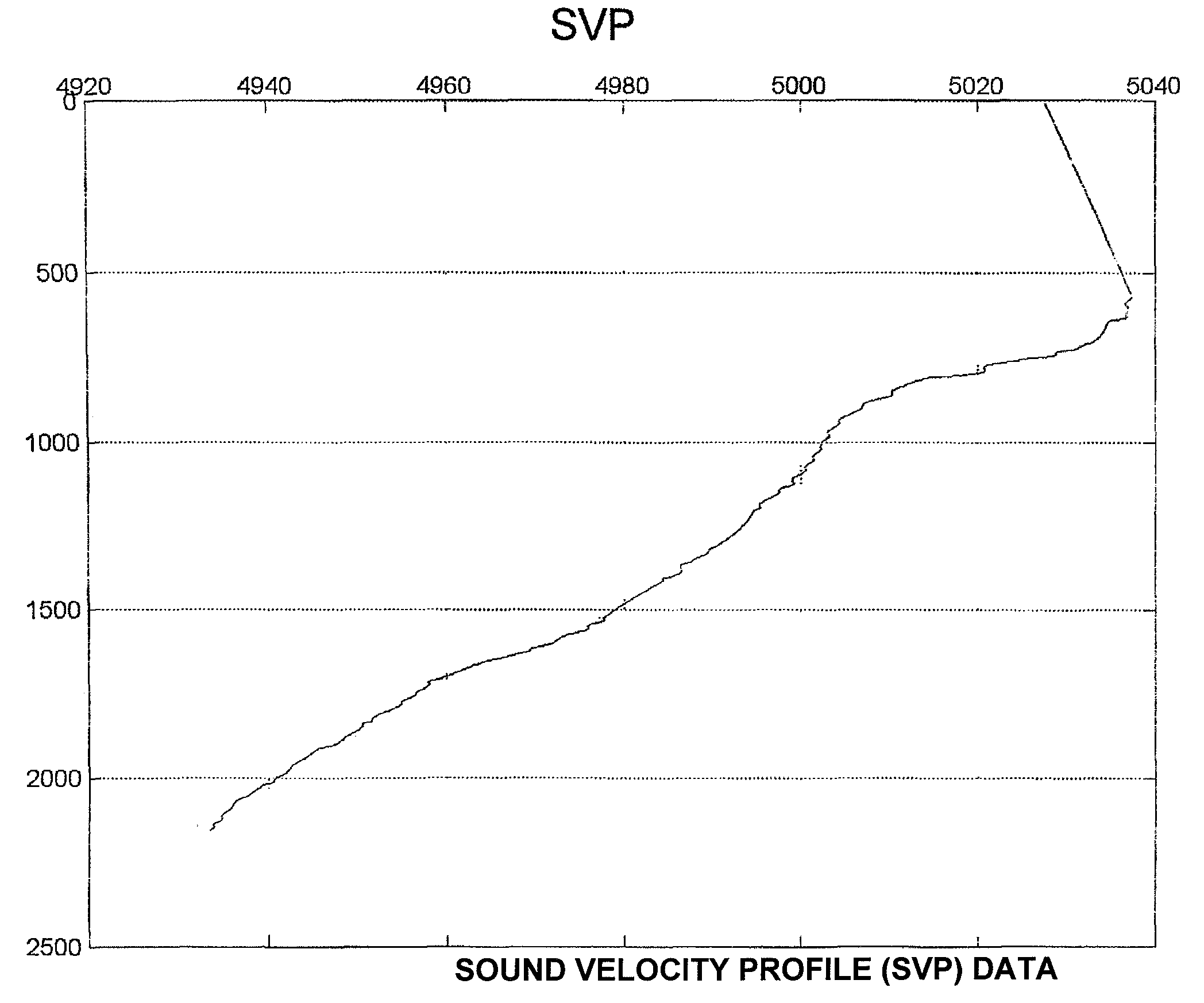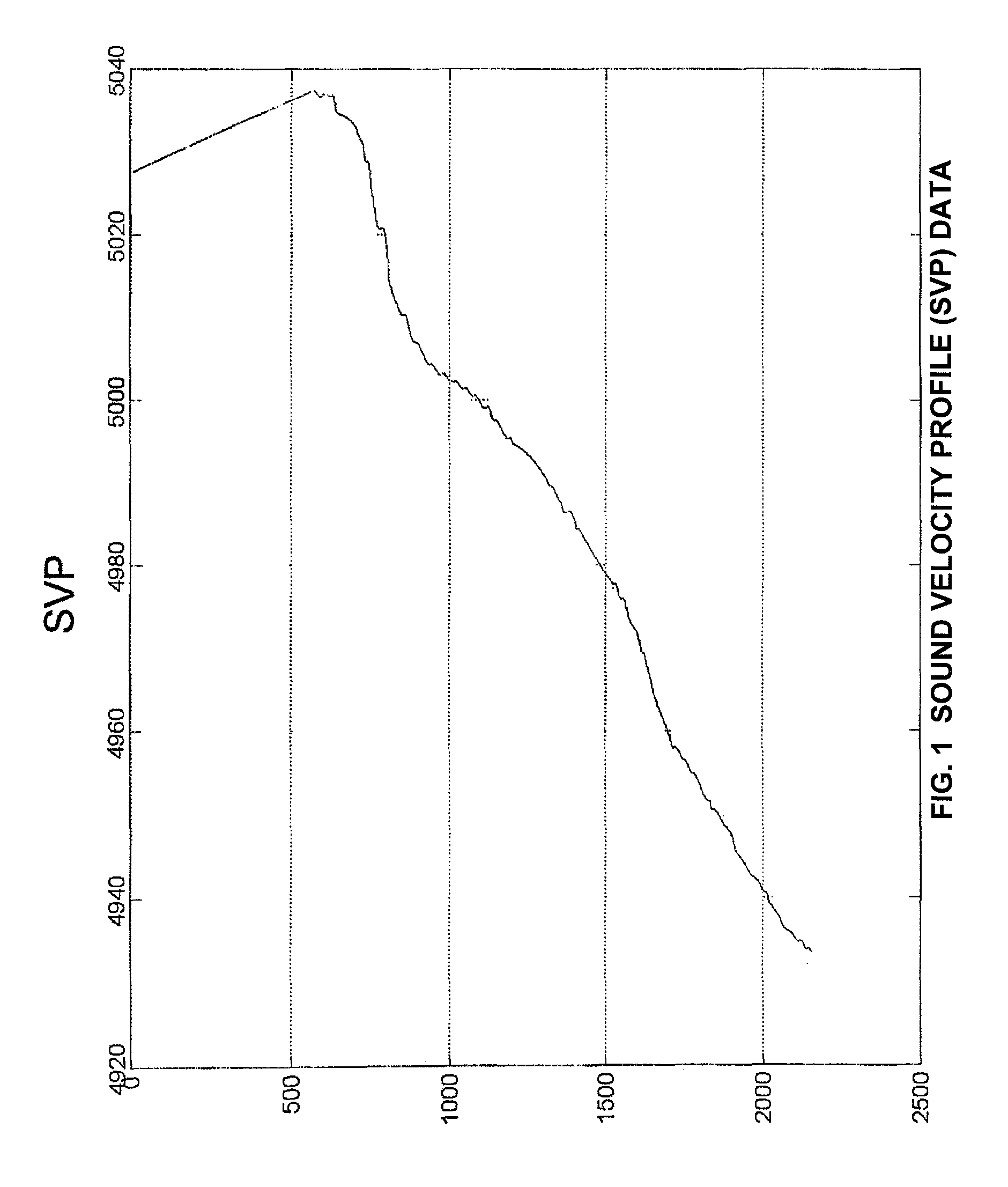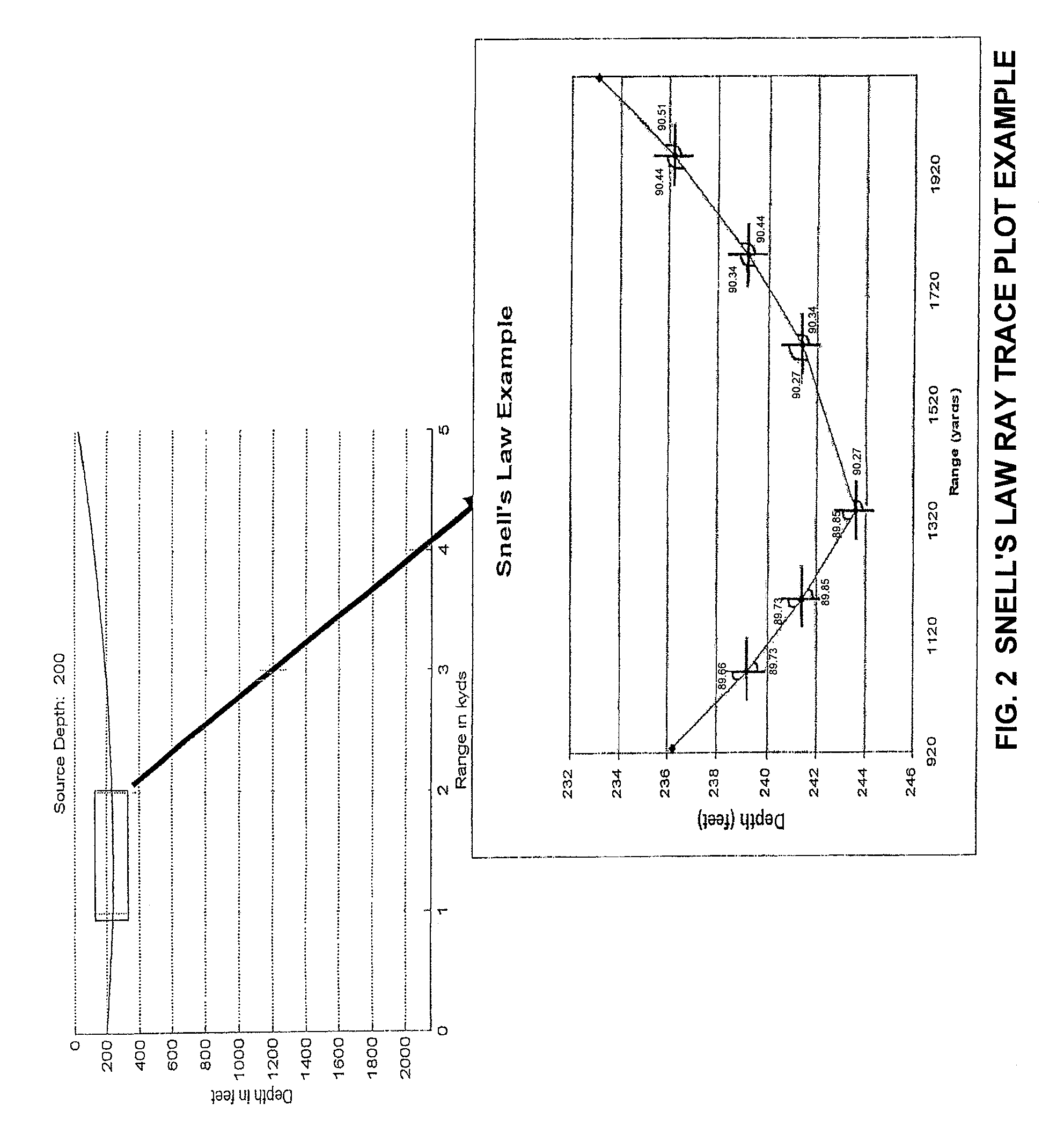Modeling sound propagation for underwater test areas
a technology for underwater test areas and sound propagation, applied in the field of modeling sound propagation, can solve problems such as adversely affecting the validity of test events, affecting sound propagation, and difficult detection of sound reflective objects
- Summary
- Abstract
- Description
- Claims
- Application Information
AI Technical Summary
Benefits of technology
Problems solved by technology
Method used
Image
Examples
Embodiment Construction
[0071]The system and method of the present invention quickly determine the ideal acoustic sound wave propagation paths available in the underwater test area by applying Snell's law to a current acoustic environment model based only on the current SVP data input and position of the sound source.
[0072]The system and method of the present invention uses the concept of sound rays to characterize the refraction of the sound waves in a body of water, such as the waters of a test area based on sound speed data. A sound ray is a vector that is perpendicular to the wave front and points in the direction in which the sound propagates. A ray trace is a line that traces a collection of sound rays over a propagation path. Ray traces represent the most probable paths sound waves emitted from a sound source at a specified depth will follow based on the current acoustic conditions. This ray method closely approximates actual propagation paths for wavelengths much less than the height of the water c...
PUM
 Login to View More
Login to View More Abstract
Description
Claims
Application Information
 Login to View More
Login to View More - R&D
- Intellectual Property
- Life Sciences
- Materials
- Tech Scout
- Unparalleled Data Quality
- Higher Quality Content
- 60% Fewer Hallucinations
Browse by: Latest US Patents, China's latest patents, Technical Efficacy Thesaurus, Application Domain, Technology Topic, Popular Technical Reports.
© 2025 PatSnap. All rights reserved.Legal|Privacy policy|Modern Slavery Act Transparency Statement|Sitemap|About US| Contact US: help@patsnap.com



